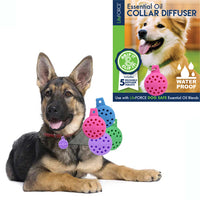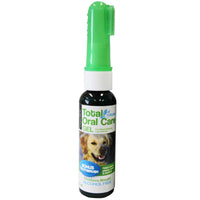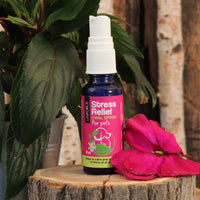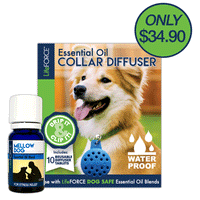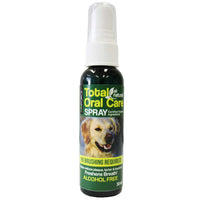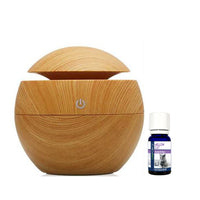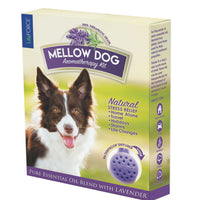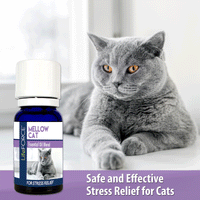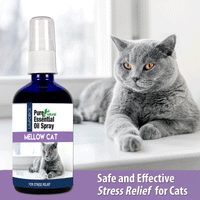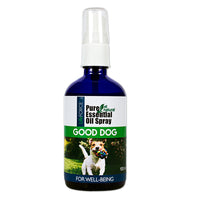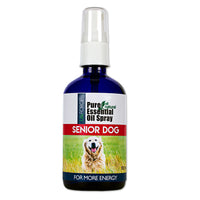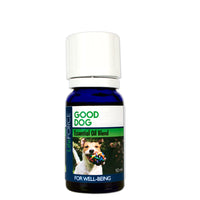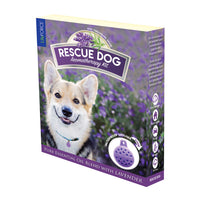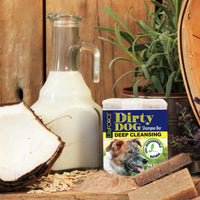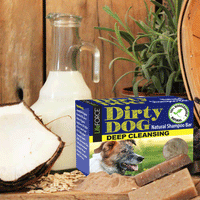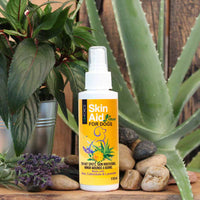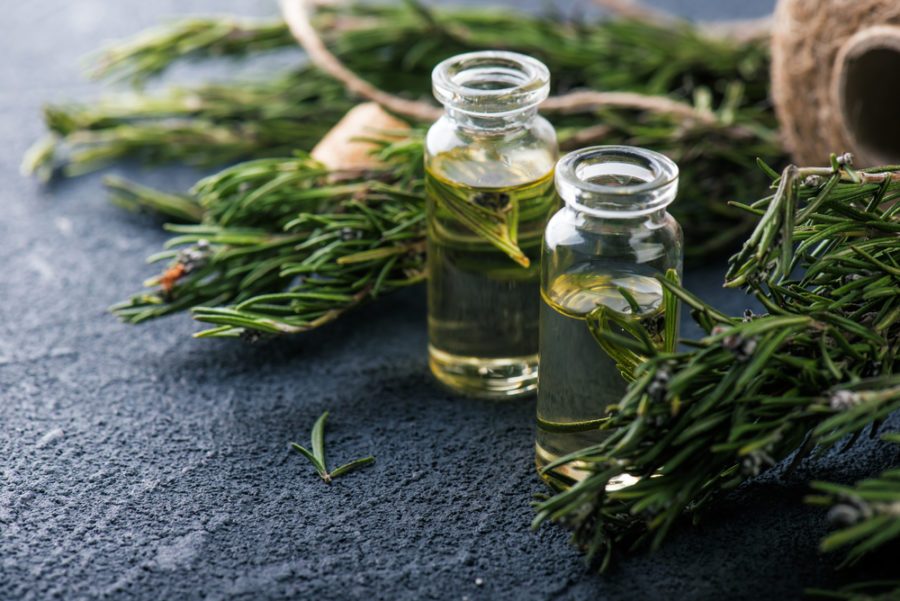
Essential oils can be very beneficial to dogs. Here’s a look at a selection of oils and their benefits, along with advice on how to choose and use them.
Many people are nervous about using essential oils on and around their dogs. Given how strong these oils are, it’s understandable. But if you purchase high quality oils and use them correctly – under the guidance of a veterinarian who is experienced in essential oils – they can be very beneficial. In this article, we’ll look at some of the top essential oils for dogs, as well as how to choose and use them.
1. Lavender
Lavender is the safest and often most effective go-to oil. It is often said that if you don’t know which oil to use, choose lavender. It’s soothing when applied topically and is calming when inhaled. Quality unadulterated lavender oil can even be ingested, though when applied topically to a dog, the odor and flavor can be a useful deterrent to licking.
2. Copaiba
Copaiba is the sap from a tree in the Amazon. I love the earthy aroma of this oil. I rub a few drops between my palms and massage it gently down the spines of my canine patients, before and after acupuncture treatments. It is a great first oil to use when layering. I counsel pet parents to apply it over the spine, knees (stifles) and hips to support a healthy musculoskeletal system.
3. Clove, wintergreen, helichrysum
These three oils can be combined to create a blend that may be layered on top of copaiba. Clove, wintergreen and helichrysum complement each other in their role of musculoskeletal support.
- Clove is “hot”, and high in eugenol. Dentists have used eugenol to numb the gums of teething babies, so if your dog licks a little, it’s okay.
- Wintergreen is “cool” and consists almost exclusively of methyl salicylate. (A synthesized version, salicylic acid, is a constituent in aspirin.) Be aware, however, that some wintergreen oil products are adulterated or chemically extended with synthetic versions – avoid these.
- Helichrysum supports a healthy vascular and neurologic system.
4. Peppermint
I use peppermint in my layering system to drive the other oils in deeper. Peppermint oil is very strong, and simply opening the bottle can make your eyes water. Use it very sparingly. It should comprise only a small part of a blend, or be diluted. Apply it carefully, and don’t get it into the dog’s eyes. I do not recommend diffusing peppermint oil.
I use peppermint topically, diluted with other oils, especially over the spine and joints of dogs. In addition to the clearing and stimulating effects it has on the mind when inhaled, peppermint oil is used internally to support a healthy digestive system. It is commonly blended with other oils (such as anise, ginger or fennel) when taken orally.
Peppermint contains a high percentage of natural menthol and menthone. A few children are very sensitive to menthol, and I keep this in mind when using any oils with a high percentage of menthol on my animal patients. Myrtle oil is an antidote for the respiratory distress that can be caused by menthol, which is why some oil blends that contain menthol also include myrtle.
5. Eucalyptus
There are many different types of eucalyptus. They vary widely in their chemical composition, which means their uses vary widely as well. Most are valued for their phenomenal support of the respiratory system.
- Eucalyptus globulus is perfect for use in a diffuser during the winter.
- Eucalyptus citriodora is almost 85% citronellal, and could be incorporated into a summer coat spray.
6. Boswellia sacra
This oil comes from the resin of the frankincense tree. I have used it internally in dogs, more than any other oil. Boswellia sacra is also often applied topically or diffused as an emotional aid.
In my practice, I use it for immune support. The oral dosing is variable. I counsel people to start slow. Place one drop of boswellia sacra in a capsule; you might choose to dilute it with a drop of coconut oil. Watch for any adverse signs, such as vomiting, diarrhea or loss of appetite. Gradually increase from one drop twice daily to a total of ten per day for the average small dog; a large dog can easily handle 30 drops per day. You may also mix this oil into food, but it may deter your pet from eating it.
Choosing quality oils
You can find essential oils in many stores and online, but it’s vital to be careful what you buy, since many products are poor quality and adulterated with synthetic substances. Knowing as much as you can about an essential oil company is crucial to determining their products’ safety and efficacy. Some questions to ask:
- Where do your oils come from?
- Do you grow and harvest your own plants? (Companies that produce their own seed, grow their own plants, do their own harvesting and test their own products have a better handle on quality control.)
- Are the oils steam distilled, or is chemical solvent extraction utilized (see sidebar)?
- Have the plants been grown on healthy soil?
- Can your oils be ingested or are they for topical use only?
- Does your company participate in gas chromatography (GC) testing? (This process determines the quality of an essential oil for clinical aromatherapy.)
Using essential oils topically
Many high quality essential oils do not need to be diluted, but they do need to be used sparingly. One drop goes a long way.
A couple drops can be rubbed between your palms, then lightly applied over the top of your dog’s head, along the spine, over the coat, around the perineum and between the toes. I commonly use lavender oil this way. A drop or two can also be applied to a towel and then lightly rubbed on the dog.
An undiluted oil applied repetitively to the same spot could cause the skin to scurf, so avoid this type of use.
For dilution, essential oils are added to carrier oils such as coconut, olive or almond oil. Dilution in water allows essential oils to be applied topically to surfaces or blended in a mister and applied topically to your dog’s body. However, this dispersion requires a drop of healthy soap to emulsify the essential oils throughout the water. Oils alone will float on the water.
If an essential oil contacts a mucous membrane or seems to be causing rash or heat on the skin, do not rinse with water! Water drives the oil in deeper. Simply dilute profusely with a carrier oil – in this case, any vegetable oil will do. Most rashes are not a reaction to the oil, but rather a reaction to a rapid local detox. Dilution will slow this process.
Steam distillation vs. chemical solvent extraction
Steam distillation is the most authentic, time-proven and safe method of extracting essential oils. It does not always provide the highest yield of oil from the batch of plant materials, so the oils will come in small bottles at a higher price.
Oils derived by chemical solvent extraction will typically be less expensive because it’s easier to get a larger yield of oil from a batch of plants. However, the chemical residue makes the oil less pure, less desirable and something which should not be ingested. I would avoid the use of chemical solvent extracted oils.
Again, it’s important to work with a vet who is well-versed in the use of essential oils. Chosen carefully and administered correctly, high quality essential oils can enhance your dog’s well-being.
Reprinted with permission of Animal Wellness Magazine
About the Author
Shop LifeFORCE's line of essential oils for dogs here!


